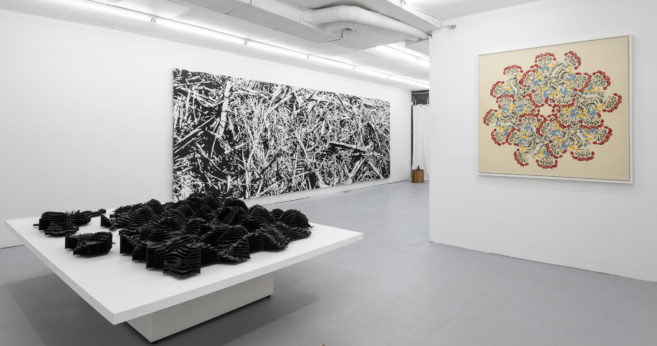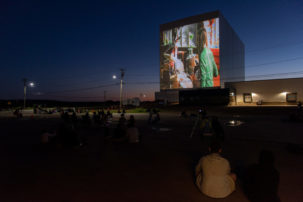The suggestively placed knobs and shiny surfaces of feminist artist Nicola L’s functional sculptures tempt the viewer to stroke, poke, pull and touch. A commode, coffee table, bookshelf and two “sofas” playing dress-up as furniture invite sublimation and use while mocking the impulse to realize an absurd desire. They are coy and abrasive, anthropomorphized through both representation and their unabashed attitude, but these are no mere objects. Scuffs and abrasions reveal a lifetime of use (in some cases by the artist, who kept select pieces in her personal collection) although touching is designated out-of-bounds by the gallery context.
In “CHÈRE,” Nicola L’s emblematic pop pieces (most from 1968–70 and one more recent work from 1994) are in conversation with sexier, shinier, curiously disjointed bodies in works by contemporary Canadian artists Nadia Belerique, Ambera Wellmann and Chloe Wise that, likewise, seem to dare the viewer to even think about touching them. In the case of Wise’s two portraits, in which Nicola L’s sofas serve as both props and companions, the dialogue is literal. Nicola L’s legacy of seamlessly melding fine art, performance and design, and embodying a feminist critique is an appropriate grounding for the living artists who engage similar genres with comparable humour and aplomb.
Most affective are the representations that confidently retreat from the human body to approach something disquietingly disfigured. Placed in the backroom, an intimate corner of the gallery, Wellmann’s painting Tip Toe (2018) depicts a polished but grotesquely mutated creature—the perils of female objectification come to life. Rendered in a palette of sickly grey and gentle blush against a bubblegum-pink background, the hybrid human-animal-object occupies a rococo nightmare in which flesh is transformed into porcelain by carefully placed streaks of bright white paint.
Works from both generations acknowledge the enduring appeal of representation as objectification, and have the ability to simultaneously critique and capitalize on the female-identified form. This double play, indicated in the title of one of Wise’s portraits, Be a cake, in fact (2018), puts the artists in good company at Arsenal Contemporary, where a unique model allows the institution to have its cake and eat it too. With exhibition spaces in Montreal, Toronto and New York, Arsenal lets the art market dictate how it operates: in Canada, where the primary source of artistic funding is publicly allocated, Arsenal functions as a private art foundation; in the US, it capitalizes on the lucrative art market by operating as a commercial space that benefits from private sales. This unique model bears analogizing with the women artists in “CHÈRE,” who critique objectification while capitalizing on its appeal. Ultimately, the works here offer a cautionary tale against desire, daring us to want them while reprimanding our drive to consume.







